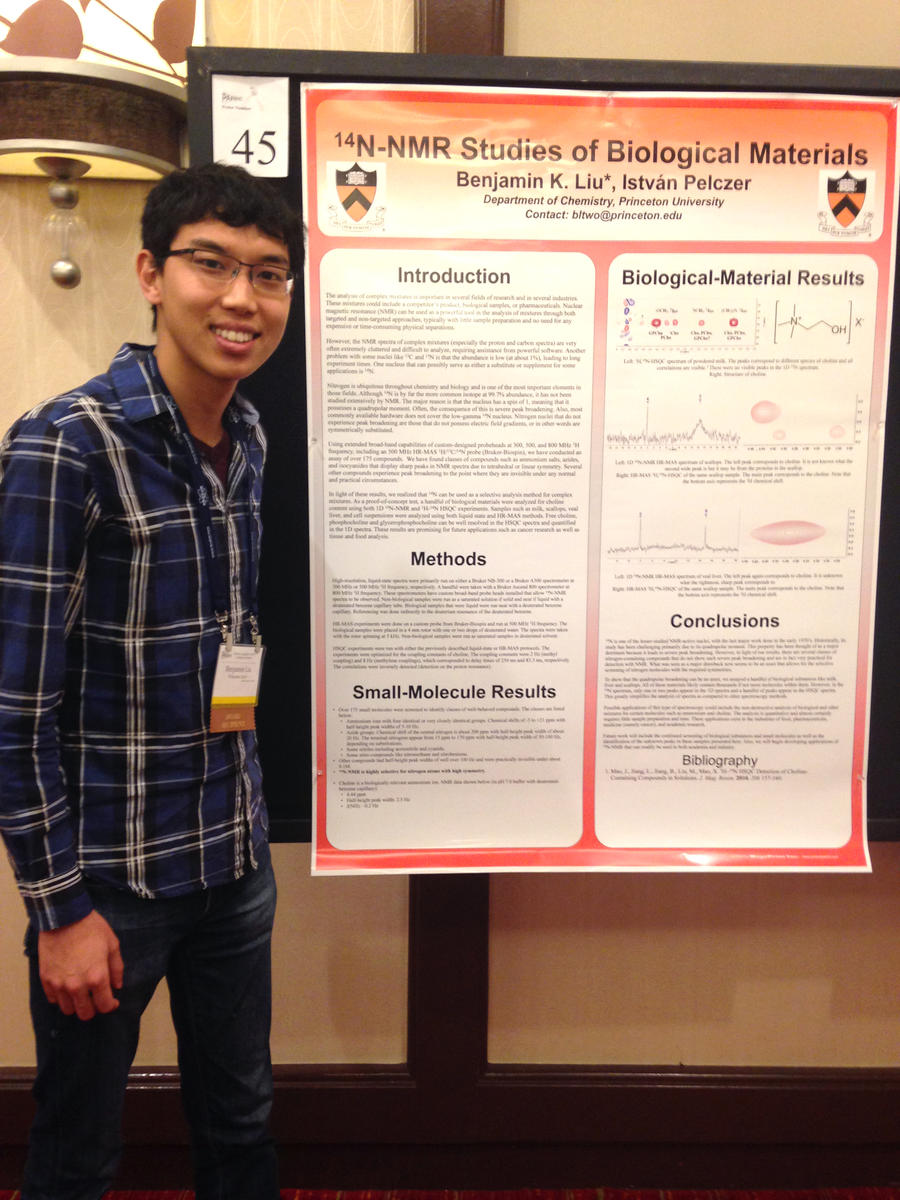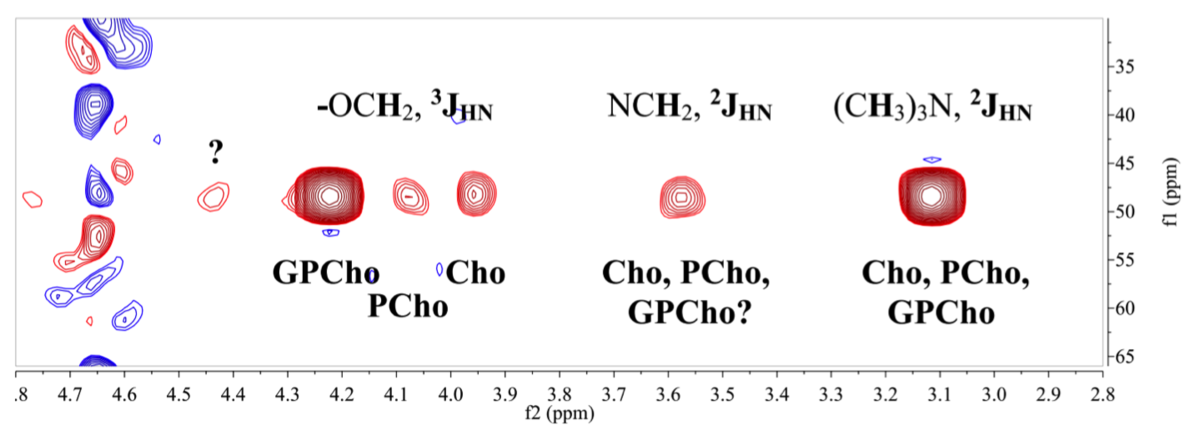Ben Liu ’15: Practical Applications of NMR in Industry Conference

I attended the Practical Applications of NMR in Industry Conference in La Jolla, CA, which ran from February 9 through 12. My advisor, István Pelczer, told me about the conference and said that it would be a great opportunity to present my senior thesis research to a scientific audience that specialized in my field.
At the conference, I presented a poster on nitrogen-14 nuclear magnetic resonance (NMR) spectroscopy. Nuclei, like electrons, have spin and the premise of this type of spectroscopy is to measure how much energy it takes to flip a spin against a magnetic field. By measuring the energies of these transitions, a great deal of information can be obtained about what the nitrogen atom is bonded to, what functional group it is in, the concentration of the molecule it is in, as well as many other pieces of information that can be extremely useful in both academia and industrial applications. These applications include the detection and quantification of relevant molecules in biological systems like cancer cells and the resolution of complex mixtures.
The rest of the conference consisted of listening to oral presentations, networking events, and workshops. By listening to these presentations and talking to experts in the field, I truly learned how widespread NMR applications really are. They ranged from the characterization of polymers, to the structure determination of new illegal drugs, to the analysis of blood samples for metabolic abnormalities. It was interesting and enlightening to see these applications because they gave me ideas about possible future applications in my own research.

However, right before I had to present my poster, I felt somewhat nervous. It’s always intimidating when you’re the new kid on the block in a room of experts, some of whom have been in NMR for decades. And as one of only about two undergraduates presenting at the conference, I was definitely the newest kid on the block. I knew that as an undergraduate, my research would not have the same depth and scope as the research of the veterans. However, as I began to present, the intimidation washed away because many of these experts were genuinely interested in my work and asked poignant questions as well as suggested future directions for my work. Every interaction I had became a discussion where both myself and the person I was talking to learned something new.
In the end, I learned that when scientists are presenting their work, there is every reason to have confidence, no matter if the scientist presenting is a high school researcher or a Nobel laureate, so long as they know that they’ve done their work well. I knew I planned and executed my experiments rigorously so it could withstand scrutiny and I knew I could be proud of my results. To any (future) chemistry major that is reading this, I just want to give one piece of advice: Take advantage of every opportunity you can offered by the department and university. You never know what amazing experiences await.
